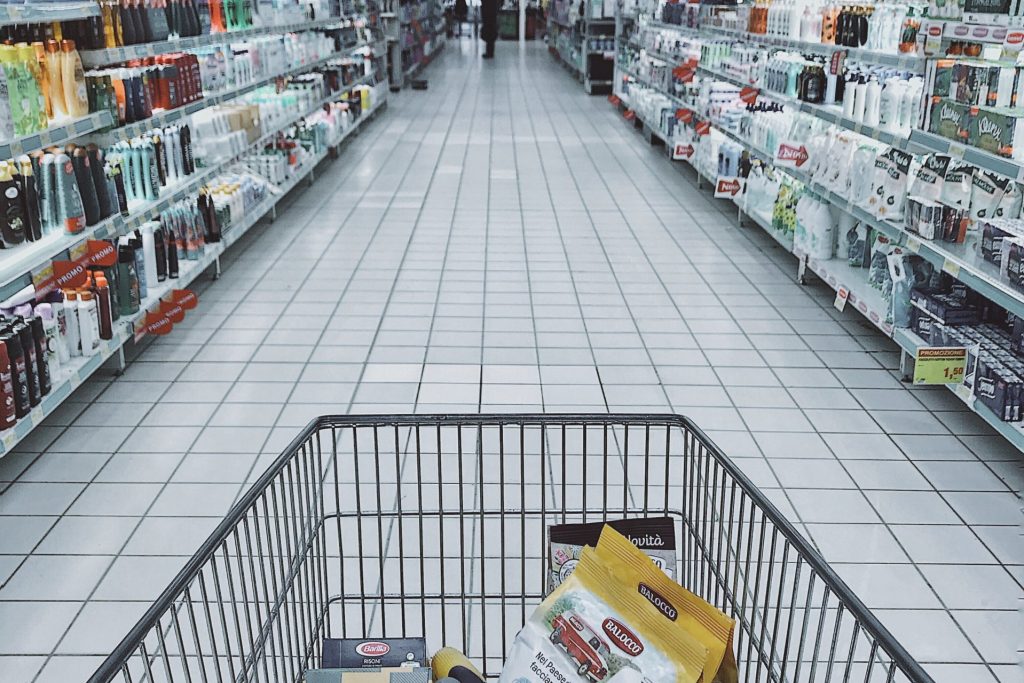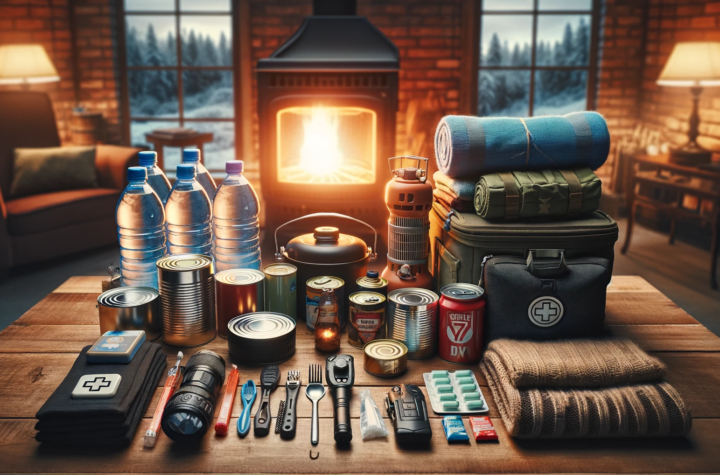
If your area is hit
If your area is hit by a major disaster, there is a good chance that you will not have access to even basic emergency supplies, and what stores do stock essential supplies are likely to be sold out quickly or even emptied by the looters, as tens of thousands of people in nearby communities are literally breaking the doors of shops to get at what they have.
Being ready is not just reserved for nutty doomsday prepper types, but it is actually an essential skill-set that has been forgotten, at least in part. Chances are that your grand parents had something like a well stocked pantry and a storage of basic essential household supplies and tools. That was just something you had to have and I will argue that it still is.
If more people re-learn these basic skills we can help to prevent things like mass hysteria and looting etc. in the event of a natural disaster, economic collapse or mass layoffs due to AI.
Even if you get into something as “simple” as an accident or you or a family member lose your job or even as a way to reduce stress, then having 3-6 months of essential items in storage is a great insurance policy to have. It’s actually almost like a savings account in your home, only the “currency” is household items, food and tools.
The list
Here is a little sample list of items that is necessary to have on hand.
(If you would like to get a full list of emergency storage prepping items, for 1-3 people or more, click here for a free spreadsheet!)
1. White rice
Long shelf life (10-30 years if stored correctly), easy to cook and mixes well with almost anything.
2. Water and distilled water
You need to store water in your home and/or BOL (Bug out Location) together with permanent solutions to clean drinking water.
3. Dehydrated powdered milk
4. Dehydrated powdered eggs
5. Canned & dehydrated meats, poultry or seafood
6. Freeze dried, ready to eat meals (MRE) or soups
Survival food can be divided into three groups : ready-to-eat items such as a muesli bar or emergency calorie, kits such as military MREs, or food that must be cooked in boiling water.
7. Wheat flour, bread and pancake mixes
Wheat flour that is stored cool, dry and in sealed containers can last for about 18 months.
8. Canned vegetables
May not be as tasty as fresh produce, but they last a lot longer and are easy to put in casseroles and such.
9. Potatoes, Carrots, Onions
Can actually be stored in a cool, dark place, such as a basement, for a long time.
10. Garlic
For cooking and also as a natural antibiotic. Store in cool place, with good air circulation.
11. Dried corn grain
Can be ground into cornflour for cornbread etc. Long shelf life.
12. Canned corn
Cheap, easy, versatile and shelf life of a few years.
13. Canned liquids
Good supplement to water.
14. Nuts and seeds
You’ll go nuts without it.
15. Oats and Oatmeal
16. Potato Flakes and au gratin potatoes
17. Crackers and cookies
18. Canned fruits
Everyone deserves a tasty snack and morale boost even in an emergency.
19. Raisins, dried fruits and fruit strips
20. Apple Cider Vinegar
21. Sugar
22. Pastas
23. Potato flour
24. Jam
25. Vodka or similar strength alcohol.
Can be used for basic sterilizing, boosting morale, bartering.
26. Chocolates
27. Iodized salt (and other salts)
28. Vitamins
29. Oils (butter, lard, olive oil, organic shortening)
30. Leavening Agents like baking soda, baking powder, dry yeast
31. Beans and legumes
32. Instant drink mixes Coffee, Tea, Ovaltine, Tang
33. Honey
As a sweetener and also antiseptic/antibacterial.
Honey can even be used as an emergency disinfectant for wounds, according to The U.S. National Institutes of Health’s National Library of Medicine.
WARNING: Never give honey to an infant.
34. Cereals, Shredded Wheat, corn or rice
35. Spices and herbs
36. Off grid cookware
Even if you can’t depend on cooking with your normal kitchen appliances, it’s important to be able to boil water Something like an old charcoal grill can actually come in quite handy for those situations Then of course you have your spirit burner camping stoves etc
37. Axe and saw
Cut wood for cooking and heat, do repairs.
38. Food safe waterproof container
While practical for storing food and perishable or sensitive materials, a waterproof container that can easily fit into a backpack is also a great place to keep copies of identification and other documents you want to keep dry and safe.
39. Candles, wood and matches/lighters
Like bottled water, it is necessary to have a large supply of emergency candles, wood and matches/lighters.
40. Water purification filters, straws, packets or tablets.
You can easily store 15 gallons of water on the floor of a regular wardrobe. It is very important that you buy some portable water filters and other methods of water treatment to store in your BOL (Bug Out Location) and BOB (bug out bag), but think of them as a backup to use when your primary store of boiled, distilled or store bought water runs out.
41. Food grade buckets and containers of various sizes
Use Food Grade 3 or 5 gallon buckets to store items such as rice and grains or emergency kits. Store items throughout your home, in good storage areas where sunlight and temperature changes can’t hurt them.
Rigid water containers made of blue polyethylene consistently work better than the opaque ones for storage as they offer more durability and leakage resistance, and may prevent bacterial growth.
42. Basic personal hygiene items
Many people also wisely pack basic personal hygiene items – toothbrush and toothpaste, soap, swabs, swabs, nappies and a well-equipped first-aid kit in their home, car and “bug out bags”.
43. Vacuum seal machine and bags
Great way to extend shelf life of food and perishable items.





More Stories
How to Start Prepping: A Fun and Easy Guide to Being Prepared for a Week
Off-Grid Living Essentials: Must-Have Strategies for Self-Reliance
The Golden Repository